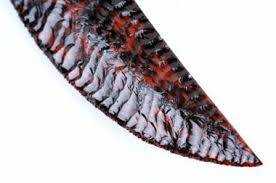 What about men?
What about men?
That's the question people often ask me as I'm praising women's bellies as sacred, not shameful. Praising our body's center as home to the soul-power kin to the magnificent Source Energy creating, sustaining, and renewing the world.
What about men? Don't they have soul-power too?
"What about men?" is also the title of a chapter my editor chose not to include in The Woman's Belly Book, for whatever reason. You can read the full text of that chapter here.
The chapter's major point: As a man enters into his own wholeness, integrating feminine and masculine polarities,
he begins to perceive a woman as a person, informed by her own purpose. His need to control her diminishes. He becomes more capable of entering into a relationship of mutual respect.
As men increasingly live and breathe from center, they prepare themselves to enter into the egalitarian relationships many women desire, and which we deserve. Truly loving relationships can develop as the partners each live from their inner source of being and support each other in returning to their core wisdom, again and again. In this way the relationship takes its strength from the shared center that emerges in the partners' midst.
As men and women support each other in coming home to ourselves, we can engender a more peaceful, just, and sustainable way of being human together on this planet.
Loving relationships? There's a story, origin said to be circa 1450, that — by my lights — holds the key to loving relationships between women and men.
I came across this story as I was preparing The Woman's Belly Book and its companion, the Rite For Reconsecrating Our Womanhood. As part of my research, I delved into Maureen Murdock's book, The Heroine's Journey.
Murdock tells the story of Lady Ragnell and Sir Gawain. The story is part and parcel of Arthurian legend; it relates to other tales of transformation as well.
You can read the original in Middle English here and adaptations into modern English here and here. In brief, the story demonstrates just what restores women's beauty and balance: Men perceiving women as persons, informed by our own purpose. Men recognizing, respecting, and supporting our autonomy, our sovereignty.
Respecting our sovereignty? A man by the name of Padma Aon Prakasha copied the text of my "What About Men?" chapter into his own book — without ever asking my permission. In his "note to the reader" he asserts his entitlement to appropriate others' words. That's either amusing or appalling, or maybe both.
 But here's something much more interesting, and a thrill: My friend Denise Ostler (a.k.a. Merri Beacon) has of her own accord, without any previous inkling of Lady Ragnell's story, written her own and up-to-date version as part of her Fairytale Medicine series.
But here's something much more interesting, and a thrill: My friend Denise Ostler (a.k.a. Merri Beacon) has of her own accord, without any previous inkling of Lady Ragnell's story, written her own and up-to-date version as part of her Fairytale Medicine series.
Her Goals & Dreams tale begins
Once upon a time, in a tiny kingdom, there dwelt a sweet princess who cared for injured animals. She created a special place in the royal stables where she could tend to her patients. She loved her work, but alas, it was time for her to marry.
The king narrowed her suitors down to three eligible princes. Each prince was invited to dine at the castle and give a speech about why he would be the best match for the princess. On the first night, a very handsome and confident prince stood to address the royal assembly....
The story continues here. Enjoy!




















